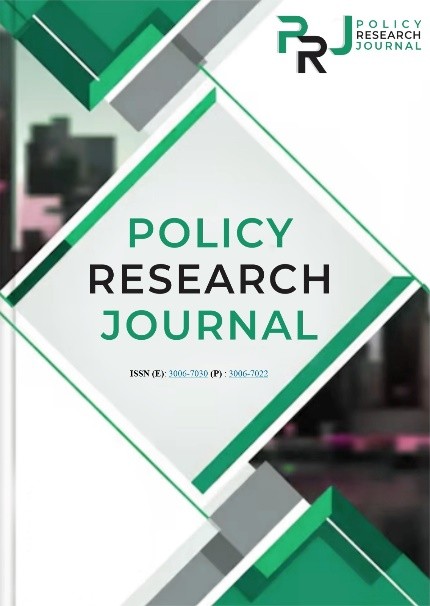UNRAVELING THE INTRINSIC STABILITY MECHANISMS IN NON-FULLERENE ORGANIC SOLAR CELLS: A PATH TOWARD DURABLE PHOTOVOLTAIC PERFORMANCE
Keywords:
Non-Fullerene Organic Solar Cells, Intrinsic Stability, Photostability, D18, Y6-BO, Device Lifetime, Photovoltaic Durability, Degradation MechanismsAbstract
Introduction: Non-fullerene organic solar cells (NF-OSCs) have been regarded as potential candidates for the next generation photovoltaic technology because of their tunable optical properties, solution based fabrication process, and lightweight features. However, their large-scale applications are prevented by their poor long-term stability under environmental conditions including high temperature and the exposure of O2 and light. The comprehension of the intrinsic stability mechanisms at the molecular level is paramount for enhancing the life time of devices and making these efficient devices commercially available. Objective: Our work aims to decipher the intrinsic stability routes of NF-OSCs by examining the structural, thermal, and chemical stabilities of high-performance D–A systems, concentrating on D18 and a non-fullerene acceptor Y6-BO. Method: A comparative study on two donor–acceptor pairs (D1-A1 and D2-A2, with D2-A2 being equivalent to D18:Y6-BO system) was adopted. The devices were made under identical conditions and were treated by aging protocols of ISOS-D1. The materials were characterized by UV-vis, FTIR, AFM, TGA, photoelectron spectroscopy, lifetime monitoring under continuous illumination and thermal treatment. Formation of reactive oxygen species and chemical degradations pathways were also investigated by electron spin resonance and chemical trapping studies. Results: The D18:Y6-BO system (D2-A2) featuring significant thermal and photochemical stability with over 90 phosphorescence MQE at 1,000-h life time and >10,000 projected T₈₀ life time. Morphological integrity, low radical generation, and diminished oxygen consumption were found, suggesting an improved intrinsic material health. Conclusion: Tailoring the molecular structure of NFAs is an effective way to enhance the operational stability of the NF-OSCs. The work uncovers fundamental molecular characteristics that drive long-term performance and presents a design route for bankable organic photovoltaics.

















